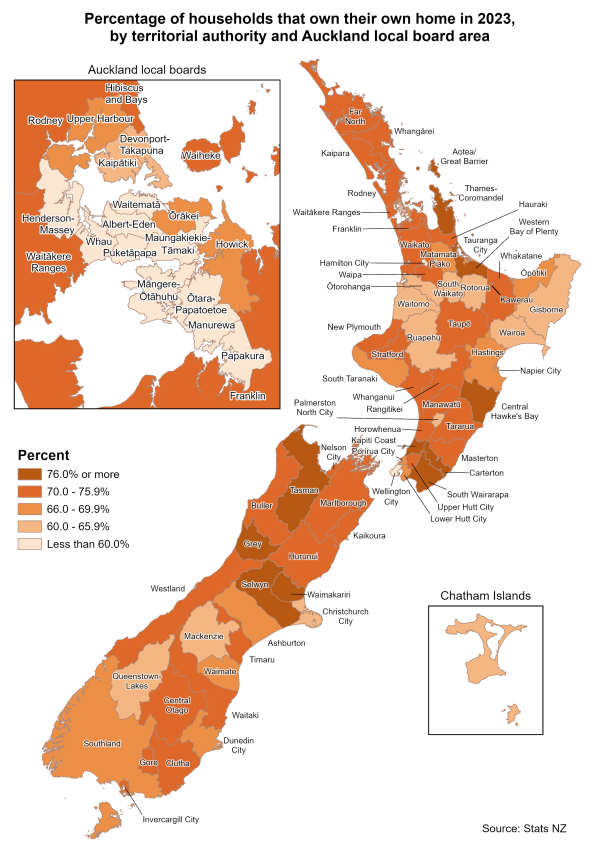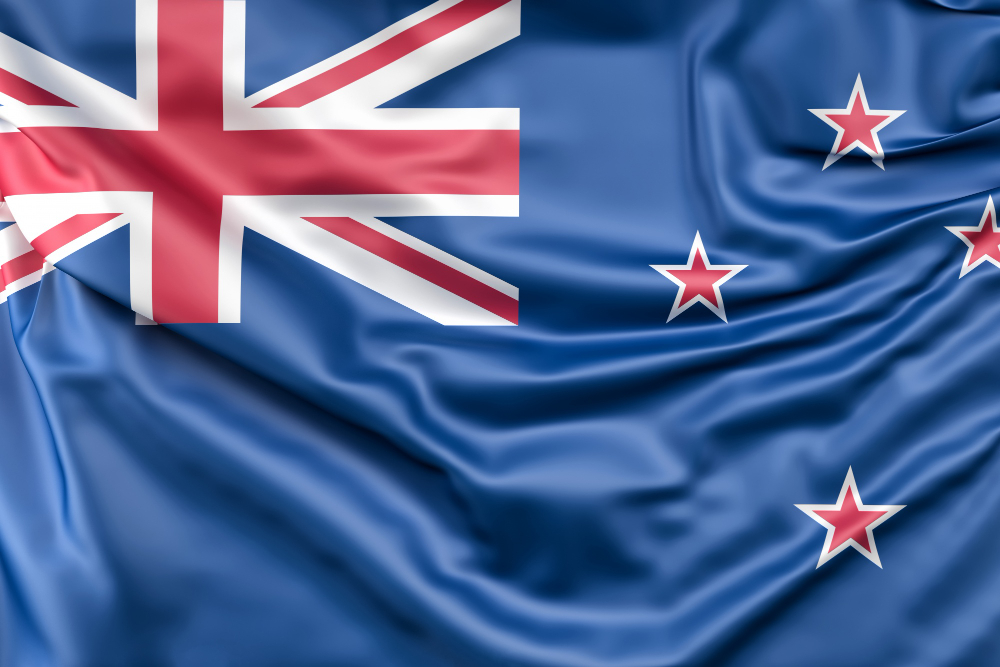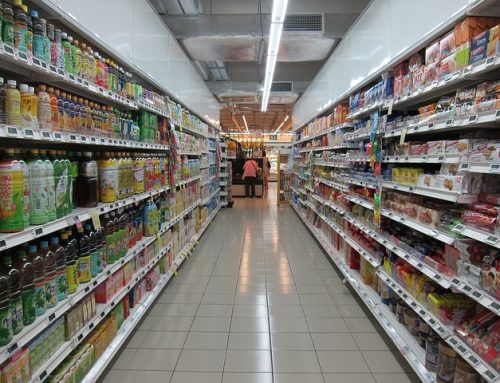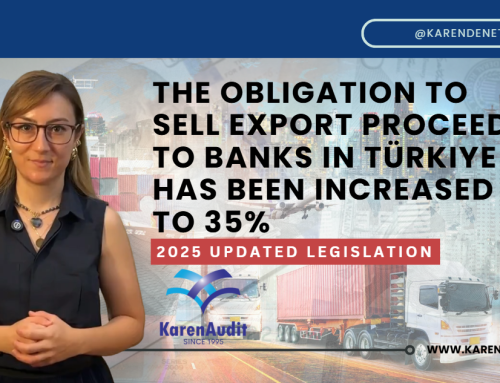Home ownership increases and housing quality improves in the New Zealand
Around two-thirds of households in Aotearoa New Zealand (1,175,217 or 66.0 percent) now own their home or hold it in a family trust, compared with 64.5 percent in 2018.
“This increase in home ownership, although small, is a reversal of the falling rates we have seen since home ownership peaked in the early 1990s,” Stats NZ principal analyst Rosemary Goodyear said.
Home ownership remains lowest in Auckland region
In 2023, Auckland had the lowest rate of home ownership of all the regions, at 59.5 percent, which was largely unchanged from the 2018 rate of 59.4 percent.
Home ownership rates increased in all other regions, with the highest rate recorded by Tasman region, at 77.4 percent, up from 75.6 percent in 2018.
Home ownership rates highest for districts close to Christchurch and Wellington cities
The areas with the highest home ownership rates were districts close to Christchurch and Wellington cities.
In 2023, Waimakariri district had the highest home ownership rate at 82.2 percent, up from 80.5 percent in 2018. Fast-growing Selwyn district followed closely at 80.5 percent, a small increase from 79.5 percent in 2018. In contrast, home ownership rates in Christchurch city were 64.8 percent in 2023, compared with 63.5 percent in 2018.
Carterton district in the Wellington region had the third highest home ownership rate at 80.1 percent, up from 77.0 percent in 2018. Wellington city had the second lowest home ownership rate at 58.6 percent, while Hamilton city had the lowest at 53.5 percent. Home ownership rates in these cities had remained largely unchanged.
“Home ownership rates are influenced by a range of factors, particularly affordability, and we know that house prices tend to be highest in city centres, especially in Auckland and Wellington, whereas homes further out may be more affordable,” Goodyear said.
“We also know that rates of home ownership are higher among older people, so we see a pattern where areas with older populations have higher home ownership rates.”
For example, over three-quarters of households in Thames Coromandel owned their home and the median age there was 55.2 years compared with the median age in Auckland of 35.9 years.
The table below shows the five areas with the highest and the five with the lowest, home ownership rates.
| 2013 | 2018 | 2023 | |
| Highest home ownership rates | |||
| Waimakariri district | 80.3 | 80.5 | 82.2 |
| Selwyn district | 78.5 | 79.5 | 80.5 |
| Carterton district | 73.9 | 77.0 | 80.1 |
| Kapiti Coast district | 74.5 | 74.2 | 77.7 |
| South Wairarapa district | 72.2 | 76.1 | 77.6 |
| Lowest home ownership rates | |||
| Ruapehu district | 55.0 | 59.8 | 61.7 |
| Chatham Islands territory | 55.3 | 55.4 | 61.3 |
| Auckland | 61.5 | 59.4 | 59.5 |
| Wellington city | 59.1 | 58.7 | 58.6 |
| Hamilton city | 57.2 | 53.9 | 53.5 |
In Auckland, home ownership rates were higher for local board areas further from the centre. Aotea/Great Barrier Island, Rodney, and Hibiscus and Bays had home ownership rates of 78.5, 75.2, and 73.8 percent respectively.

Fewer homes with dampness and mould
In 2023, 18.1 percent of private occupied dwellings experienced dampness at least some of the time, compared with 21.5 percent in 2018. One in 7 homes in 2023 (14.0 percent) had mould over A4 size always or sometimes compared with 1 in 6 in 2018 (16.9 percent).
“Census data shows an improvement in housing quality since 2018, which is important as damp and mould can impact people’s health and wellbeing,” Goodyear said.
Gisborne the only region to experience an increase in dampness and mould in homes
Census data showed that all regions except Gisborne experienced a decrease in dampness and mould between 2018 and 2023.
“The Gisborne region was particularly hard hit by the cyclone events of early 2023 and does not follow the national trend, with almost 1 in 3 homes there experiencing dampness at the time of the census,” Goodyear said.
Gisborne region experienced the highest rate of dampness at least some of the time, going from 26.4 percent in 2018 to 30.0 percent in 2023, while mould over A4 size, sometimes or always, also increased (from 21.3 to 23.4 percent).
In 2018, Northland region had experienced the highest rates of dampness sometimes or always at 27.6 percent, but this decreased to 24.6 percent in 2023, making it the second dampest region.
The proportion of damp homes showed little change in Hawke’s Bay (from 18.3 to 17.8 percent), but rates of mould decreased slightly from 14.1 to 12.7 percent.
Source: StatsNZ
Legal Notice: The information in this article is intended for information purposes only. It is not intended for professional information purposes specific to a person or an institution. Every institution has different requirements because of its own circumstances even though they bear a resemblance to each other. Consequently, it is your interest to consult on an expert before taking a decision based on information stated in this article and putting into practice. Neither Karen Audit nor related person or institutions are not responsible for any damages or losses that might occur in consequence of the use of the information in this article by private or formal, real or legal person and institutions.






